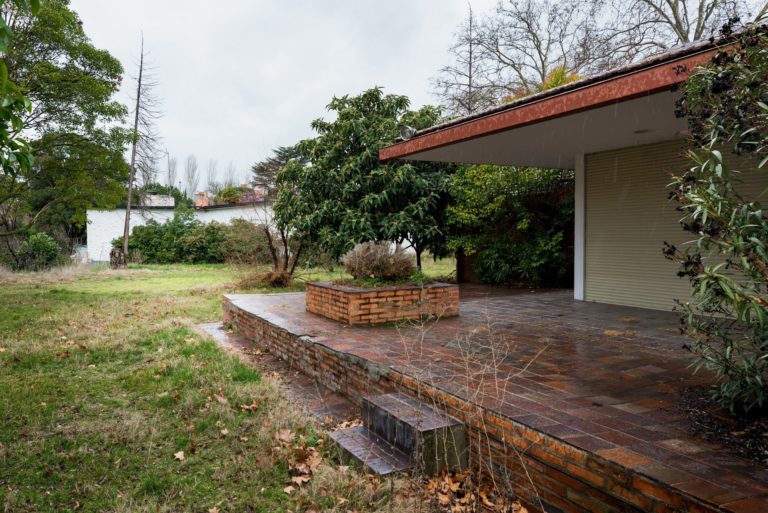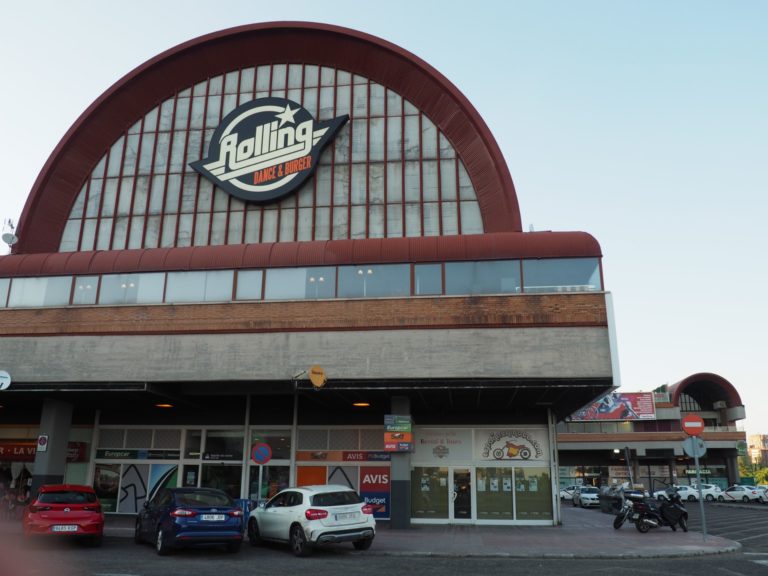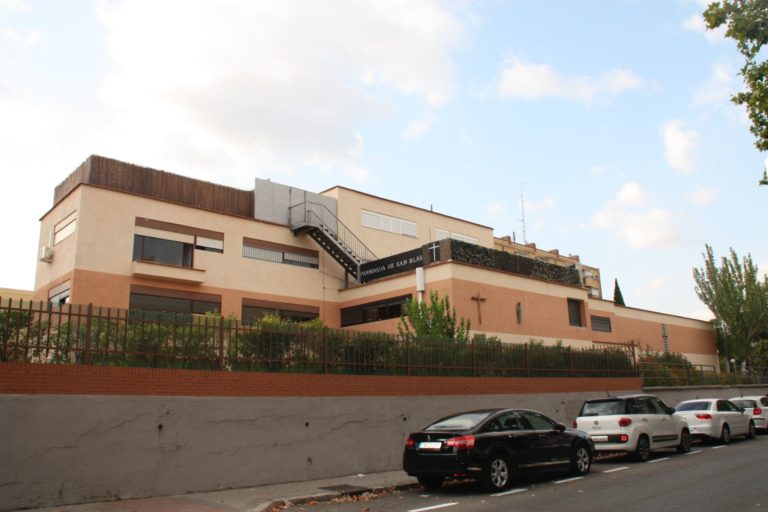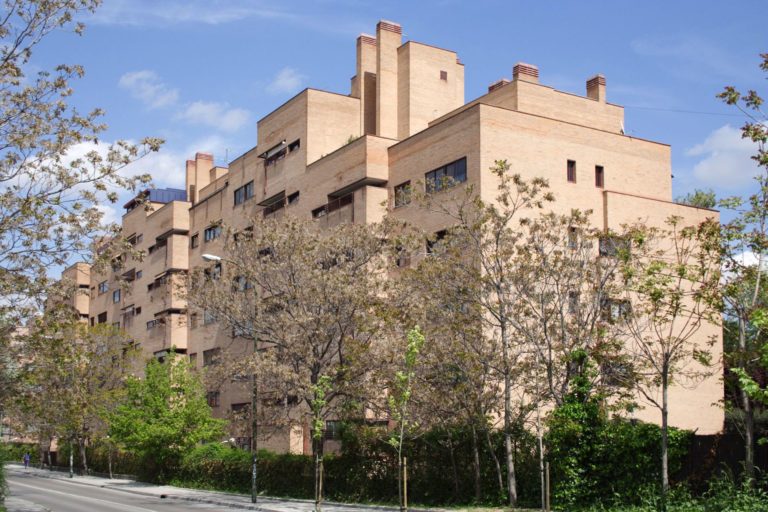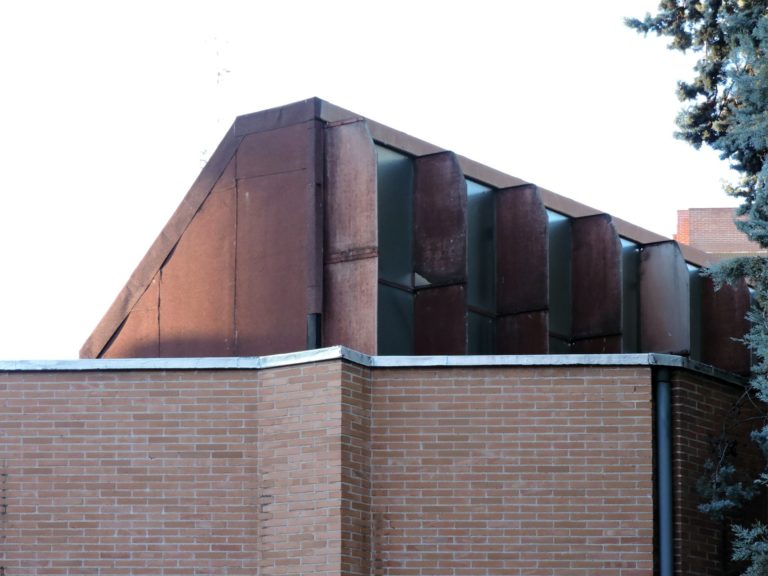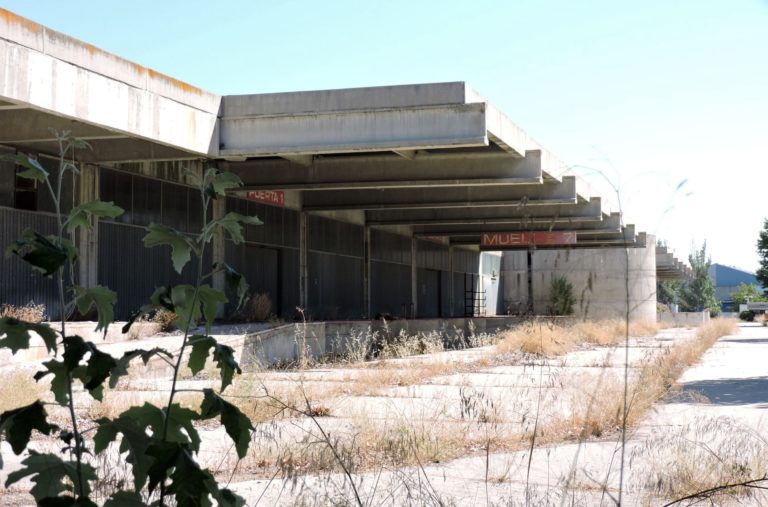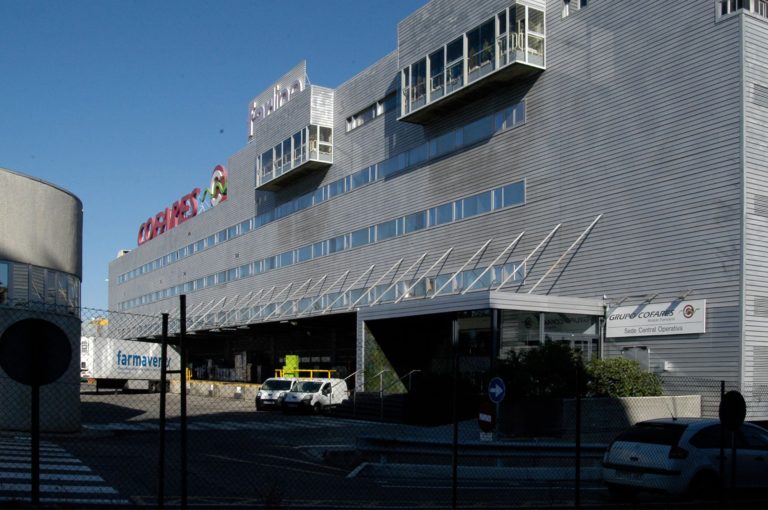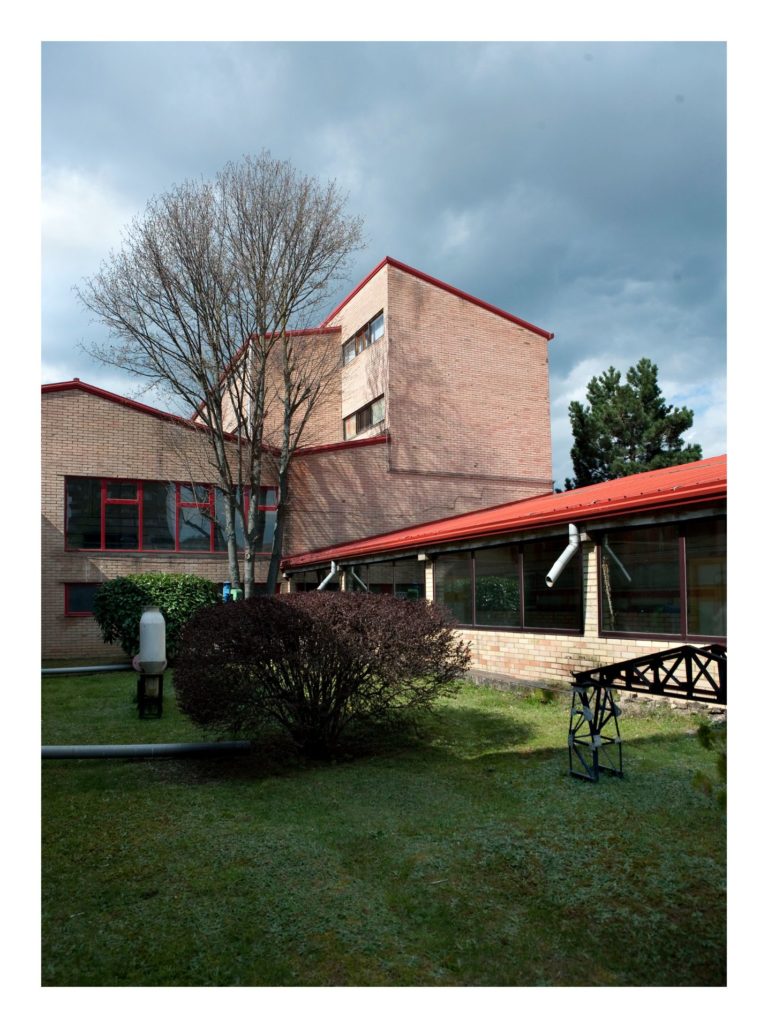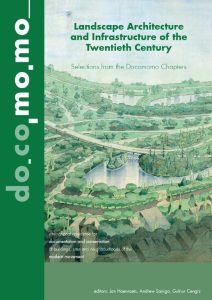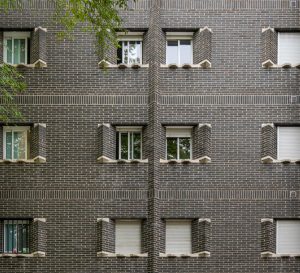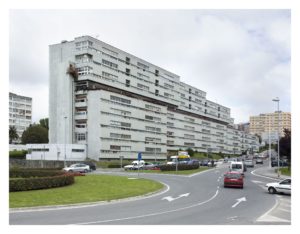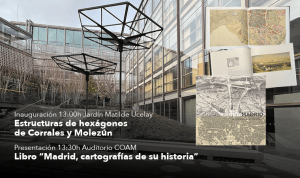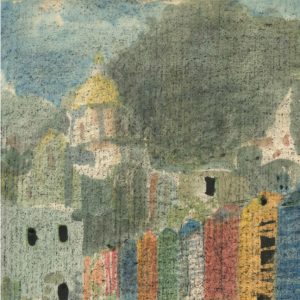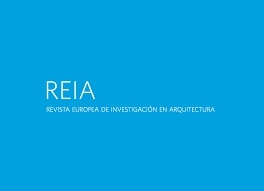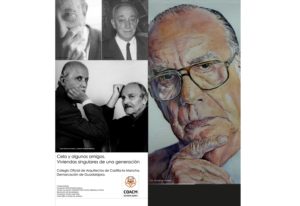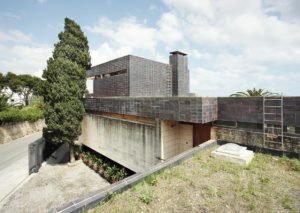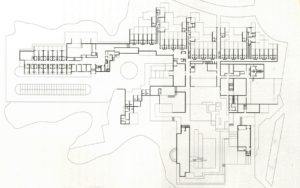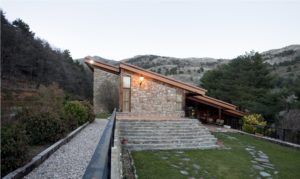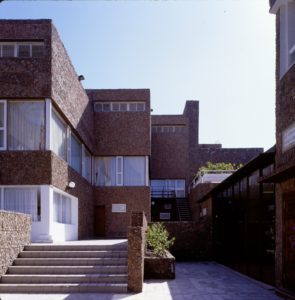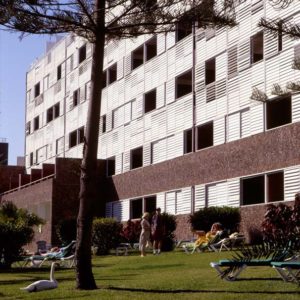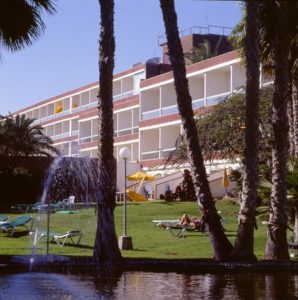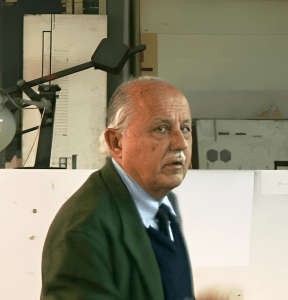
José Antonio Corrales Gutiérrez
Madrid, 1921-2010
José Antonio Corrales was born in Madrid and eventually studied architecture in the same city, earning his degree in 1948.
After initially working with his uncle, the architect Luis Gutiérrez Soto, he began collaborating with Ramón Vázquez Molezún, with whom he would eventually form one of the most solid professional teams of the late 20th century. It was a respectful association, which brought many successes, and in which both architects managed to maintain their originality, including their own independent studios, although they were very close together at calle Bretón de los Herreros, 57, where Corrales settled in 1955 and remained until the end of his career, and where undertook his brilliant work.
José Antonio Corrales worked both individually and in collaboration with other great architects ─ in addition to Molezún ─ including De la Sota, García de Paredes, Cano Lasso, Javier Carvajal, Olalquiaga, Salvador Molezún, and Pérez Pita, among others.
Together with Vázquez Molezún, Corrales built several of the most emblematic buildings in late 20th-century Spanish architecture, some of which earned international renown, such as the Spanish pavilion for the 1958 Brussels Universal Exhibition, now located in Madrid. It was conceived as a fluid, stepped pavilion, adapted to the site, taking as a base module “a lightweight, prefabricated hexagonal umbrella to form the roof”, in Corrales’ words, which could be connected repeatedly, generating an endless surface.
Also worth highlighting are the Instituto Herrera del Pisuerga (Palencia), now demolished, developed around a striking section; the Residencia de Cristalera Española in Cercedilla, which adapts to the topography with a large single-pitched roof; the industrial buildings for Profidén, Selecciones del Reader’s Digest, and Cofares, with their powerful volumes; as well as the Bankunión and Pastor bank offices, perfect adaptations to consolidated urban areas; and the Almendrales neighbourhood, one of the most interesting social housing complexes, all designed through collaborations.
One of his most iconic projects, built with Vázquez Molezún, is considered one of the most important Spanish homes of the modern movement: the Huarte house in Madrid, which was able to combine the traditions of Spanish architecture and gardening with the principles of the modern movement.
After winning a competition, the two architects built the Chamartín station, one of their main civil projects in Madrid.
Corrales’ notable solo projects include the Yacht Club of Pantano de San Juan in Pelayos de la Presa (Madrid), with its powerful expressionism, the Church of the Santísimo Cristo de la Misericordia in Madrid, an exercise in purity, and his own home in Aravaca, with intense geometric complexity and a perfect organic insertion on the site.
José Antonio Corrales is considered one of the great masters of late 20th-century Spanish architecture. A precise architect, his work demonstrates great plastic strength despite its restraint. His ability to adapt his designs to the landscape and the physical surroundings, along with his use of natural light and climate control, made him a pioneer of organicist architecture, despite the maximum abstraction of his volumes and purity of forms.
Corrales referred to himself as innovative, untraditional and optimistic – and that quality, optimism, was a hallmark of the magnificent generation of post-war architects to which Corrales and Molezún both belonged. Their generation began its work in the 1950s by breaking with the official architecture, in order to build bridges between the European avant-garde of the time, the tenets of Spanish rationalism from the 1930s, and the Mediterranean world. That generation, and Corrales within it, with his open-minded yet still minority approach, would return Spanish architecture to the standing it had lost in the world order, in terms of formal, typological and technological development.
Although Corrales had no theoretical pretensions, he was elected to the Royal Academy of Fine Arts of San Fernando (1999) to replace Luis Cervera Vera and carried out a discreet teaching activity in the Architectural Design department at the Madrid School of Architecture, where he had studied. In parallel, he was a guest professor at numerous universities and institutions, an activity that increased in his later years.
His accolades include the National Architecture Award on two occasions (1948 and 2001), the “Juan de Villanueva” Prize for Architecture in 1977 for the Banco Pastor building, the Gold Medal for Architecture (1992), and the Antonio Camuñas Prize for Architecture (2004).
Biography by Miguel Lasso de la Vega
Bibliography
- AA VV, José Antonio Corrales: Premio Nacional de Arquitectura, 2001, Ministerio de la Vivienda, Madrid, 2007.
- BERLINCHES ACÍN, Amparo, dir., Arquitectura de Madrid, Fundación COAM, Madrid, 2003, vols. 1 y 2.
- URRUTIA NÚÑEZ, Ángel, Arquitectura española siglo XX, Cátedra, Madrid, 1997, pp. 410-413, pp. 448-451.
- RUIZ CABRERO, Gabriel, “Corrales y Molezún”, in Documentos de Arquitectura 33, 1996, pp. 3-6.
- AA VV, José Antonio Corrales, Ramón Vázquez Molezún, Colegio Oficial de Arquitectos de Almería, Almería, 1996.
- COSTA, Xavier, LANDROVE, Susana, eds., Arquitectura del movimiento moderno: registro DOCOMOMO Ibérico, 1925-1965/Modern Movement Architecture: Iberian DOCOMOMO Register, Fundación DOCOMOMO Ibérico, Barcelona, 1996.
- CAPITEL, ANTÓN, “Arquitectura Española del siglo XX”, in Summa Artis. Historia General del Arte, Espasa Calpe, Madrid, 1995, tomo XL.
- AA VV, Corrales y Molezún [Catálogo de la exposición], Ministerio de Fomento, Madrid, 1996.
- BALDELLOU SANTOLARIA, Miguel Ángel, “Corrales y Molezún, esa extraña pareja. 1952-1993. Resumen de una obra magistral”, in Diseño interior 32, febrero 1994, pp. 50-63.
- AA VV, Corrales y Molezún: Medalla de Oro de la Arquitectura 1992, Consejo Superior de los Colegios de Arquitectos de España, Madrid, 1993.
- MONEO, Rafael, “Corrales y Molezún: claves de una trayectoria: optimismo racionalista”, in Arquitectura Viva 28, enero-febrero de 1993, pp. 72-73.
- ÁLAMO GÓMEZ, Mª Isabel del, “El arte y la razón. Corrales y Molezún, medalla de oro de la Arquitectura 1992”, in Revista del Ministerio de Obras Públicas y Transportes 405, enero 1993, pp. 85-87.
- CORRALES, José Antonio, “Ramón Vázquez Molezún”, in Arquitectura 296, noviembre de 1993, p. 87.
- AA VV, Arquitectura y Desarrollo Urbano. Comunidad de Madrid, zonas Centro y Norte, tomos I, II y III, Madrid: Comunidad de Madrid, Colegio Oficial de Arquitectos de Madrid y Fundación Caja Madrid, Madrid, 1991-1993.
- AA VV, Guía de Arquitectura. Madrid: 1960/1989, Colegio Oficial de Arquitectos de Madrid, Madrid, 1989.
- BAYÓN ÁLVAREZ, Mariano, “El strip de Madrid. José Antonio Corrales, Ramón Vázquez Molezún”, in El Croquis 13-14, noviembre-enero de 1983-1984, pp. 64-65.
- “CORRALES Y MOLEZÚN”, in Arquitectura, Xarait, Madrid, 1983.
- FERNÁNDEZ ALBA, Antonio, “De la belleza del construir y del saber del arquitecto, Corrales y Molezún”, in Arquitectura, Xarait, Madrid, 1983.
- CARRO CELADA, José Antonio, “Corrales y Molezún en busca de una poética de los materiales”, in I. Estudios e Investigación 9, enero de 1978, pp. 25-35.
- “José Antonio Corrales-Ramón Vázquez Molezún”, in Boden 18, verano de 1978, pp. 22-25.
- CASTRO, Carmen, “Los arquitectos critican su obra. José Antonio Corrales y Ramón Vázquez Molezún”, in Arquitectura 154, octubre de 1971, pp. 25-30.
- FULLAONDO, JUAN DANIEL, “Corrales y Molezún. Situación histórica”, in Nueva Forma 23-24, diciembre-enero de 1967-1968, pp. 77-94.
- “Corrales y Molezún”, in Nueva Forma 25, febrero de 1968, pp. 43-64.
- “Corrales y Molezún”, in Nueva Forma 26, marzo de 1968, pp. 39-58.
- FULLAONDO, Juan Daniel, “Corrales y Molezún”, in Nueva Forma 22, noviembre de 1967, pp. 29-44.
- FULLAONDO, Juan Daniel, “Corrales y Molezún”, in Nueva Forma 21, octubre de 1967, pp. 25-40.
- FLORES, Carlos y AMANN, Eduardo, Guía de Arquitectura de Madrid, Madrid, 1967.
- FULLAONDO, Juan Daniel, “Corrales y Molezún: Agnósticos arquitectónicos”, in Nueva Forma 20, septiembre de 1967, pp. 37-40.
- FLORES, Carlos, Arquitectura Española Contemporánea, Aguilar, Madrid, 1961.
- BERTEL, Amadeus, “La arquitectura en la exposición de Bruselas”, in Goya, 25, julio-agosto de 1958, pp. 24-31.
